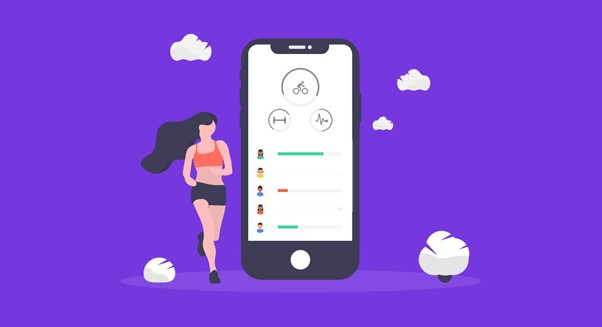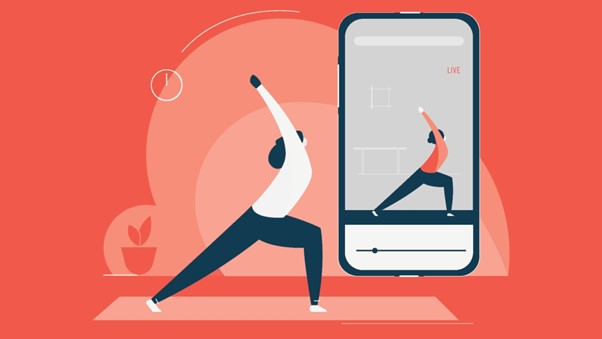You may have thought of creating a fitness app if your firm deals in health-related goods or services. After all, interacting with your consumers may be a breeze with these mobile technologies.
The end result of developing a fitness app is that you provide users with useful mobile tools that enable them to monitor chronic health issues, acquire timely health information, or change their diet and exercise habits.
Users will be able to track their progress and observe all the changes in real time with the introduction of fitness mobile apps. We’ll go through the main types of fitness apps, how to make one, and how they can make money in this article.

How to Create a Fitness Application
Select the Monetization Strategy
Choose your preferred revenue strategy among premium applications, in-app purchases, freemium, advertisements, or sponsored content.
Think about Fundamental Fitness App Functions
User profiles, Notifications, Social sharing, and Geolocation are the fundamental aspects of a fitness app.
Employ a Development Crew
You must engage with a fitness app development company to transform your company’s concept into a practical solution if you want to create your own fitness app.
Develop Applications for Fitness
You will require at least three developers to launch an app for iOS and Android, including backend developers and iOS and Android mobile app developers.
Fitness App Types
You’ll need to choose a certain kind from the many options if you want to develop a fitness app. This article covers the most well-liked fitness app categories.
Workout Apps
Fitness app users may access a variety of workout regimens and videos from the comfort of their homes. Some fitness applications are designed specifically for a certain kind of activity, like running.
Some provide a mix of everything. Weekly video updates and a subscription-based pricing model are common features of workout apps. Additionally, several apps provide live classes conducted by fitness professionals that users may attend. You can create any type of fitness app with https://trembit.com/.
Nutrition and Dietary Apps
Diet and nutrition applications assist in compiling monitoring information that makes a user’s objectives precise, quantifiable, and reachable. How? When you create a fitness app, you assist users in understanding how many calories they should consume each day depending on their height, weight, sex, and age.
Activity monitoring Apps
The applications in this category may monitor a user’s physical activity, which essentially includes all of their daily activities. The number of steps walked, stairs climbed, hours of sleep, distance and speed ran, and calories burnt are all tracked by activity monitoring applications.
The app displays user data on the app screen and often has the ability to create charts, save routes on a map, and display user progress.
Users may compile recipes, make shopping lists, and establish personal objectives. This often calls for access to a database of foods and their nutritional profiles.

Strategies for Monetizing Fitness Apps
Not every fitness app has the same revenue model. Here are a few potential monetization strategies to think about.
Paid Model
Users of the premium model must pay a fee before downloading. Regardless of how much usage they make of the software, the user pays a set fee. To give customers a taste of the software, they could also provide trial use for a short while. This design is appropriate for an app with strong brand awareness and excellent reviews and ratings.
Ads
When providing free software, in-app advertising is a fantastic method to generate income. Additionally, there are other types of advertisements you may run. For a less obtrusive experience, you can run banner advertising for applications rather than pop-ups. As an alternative, you might have consumers watch videos in exchange for more free viewing.
In-App Purchases
This method calls for the development of a fitness application and its free distribution. Users of the free app version are given a sufficient number of fundamental functions to have a flawless experience. The software does, however, provide certain extra services for a price. Users are not required to purchase them, but if they genuinely appreciate the concept behind your program, they will often pay for extras that go beyond its core functionality.
Combined
To maximize your profits, you might mix several models. For instance, if your software shows adverts, users may get rid of them by subscribing for money. As a result, both premium and non-subscribed customers will bring in revenue for you.
Finding an app that doesn’t utilize the mixed model is difficult. Users that subscribe to the service don’t see any advertisements anymore. Nearly every business is aware of it and takes advantage of it.

Taylor is a freelance SEO copywriter and blogger. His areas of expertise include technology, pop culture, and marketing.













